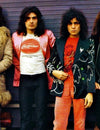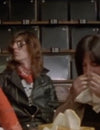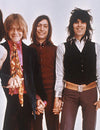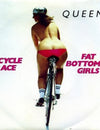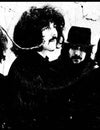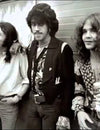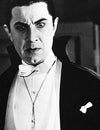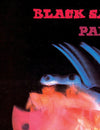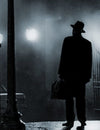
Why Dracula Is The Greatest Horror Icon
Bela Lugosi's immortal vampire once gushed on screen, "To die, to truly be dead, that must be glorious." However, famous antiheroes are doomed to remain in the public consciousness forever, and in the hallowed halls of horror, it is Dracula that reigns supreme
Before the legendary Universal Pictures feature from 1931, Bram Stoker's Dracula was the most well-known vampire creation in English-speaking countries. That's horrible, but it doesn't really matter. Now, with every flutter of his cape, he creates an even larger shadow than before.
Dracula kicks ass. He's the only vampire that Buffy (Sarah Michelle Gellar) couldn't bring herself to kill, and the only bloodsucker that Blade (Wesley Snipes) would consider sucking up to. Without the cape, his abilities would make him an ideal superhero, but he just cares about himself, and justice is much out of his level.
We all know Dracula is the villain of the piece. Anarchist, or dissenter. You couldn't bring him home to see your mum in a tux because she might recognise him from another existence. This is how many of his on-screen relationships begin, and it's also how they almost always end: with hearts broken, heads chopped off, and too many stakes to claim. Count de Count, the numerical dictator of Sesame Street, wouldn't have any trouble with that.
Dracula Cast Every Other Vampire Into The Shadows
Even if Stoker's 1897 book isn't the best horror novel ever written, the character of the vampire is undoubtedly the most iconic in the horror genre. Stoker drew inspiration from the novel Varney the Vampire: Or, The Feast of Blood (1847) by James Malcolm Rymer and Thomas Peckett Prest, incorporating its religious overtones, stake-as-weapon mechanism, and the icy, dead touch of the undead. In the end, though, the mystery figure turns out to be nothing more than a cool vampire saddled with a horrible moniker, and he commits suicide by jumping off of Vesuvius. The presence of Dracula overwhelms Stoker's writing. Vampires are depicted as evil in Dracula. You should be terrified of him.
In an ideal universe, Countess Mircalla Karnstein, alias Carmilla, from Sheridan Le Fanu's 1872 novella Carmilla would be the preeminent icon of literary vampires, influencing films to take a radically different path than the traditional violent alpha male driven bloodfests. One of the best female vampires in film history, Carmilla was portrayed by Ingrid Pitt in the 1970 Hammer horror masterpiece The Vampire Lovers and by Danish actress Yutte Stensgaard in the less distinguished Lust for a Vampire (1971). Unlike the other vampire Pitt played for the studio, she is both delicious and deadly, otherworldly and smolderingly earthy.
Even though the picture was titled "Countess Dracula," the real vampire is really Elizabeth Báthory, the Hungarian queen who was rumoured to have bathed in the blood of her slaves in an attempt to stay young forever. Even if this was only political slander, it became propaganda, and the bloody legend lives on. No matter how positive an outlook Countess Báthory maintained, she was no match for Christopher Lee's vengeful Dracula in Hammer flicks like Taste the Blood of Dracula.
Dracula Slays Hollywood
Both the Broadway lead actor who originated the role and Tod Browning's 1931 film version of the play based on Stoker's novel had a profound impact on the horror genre. The combination of Lugosi's stuttering Hungarian accent, gracefully billowing cape, and distressingly compelling stare made for one of cinema's most unforgettable images, and it was eternally etched into celluloid. Images of the Invisible Man, the Wolf Man, Freddy Krueger, Pinhead, and Leatherface sometimes appear with Dracula in best-of horror collages on all-day matinee placards, but Dracula is always the focus of attention.
Even though the picture was titled "Countess Dracula," the real vampire is really Elizabeth Báthory, the Hungarian queen who was rumoured to have bathed in the blood of her slaves in an attempt to stay young forever. Even if this was only political slander, it became propaganda, and the bloody legend lives on. No matter how positive an outlook Countess Báthory maintained, she was no match for Christopher Lee's vengeful Dracula in Hammer flicks like Taste the Blood of Dracula.
Dracula's influence extends far beyond the countries of his historical namesake, having permeated cinema, television, literature, and the internet. When the end of the world finally arrives, he will be among the first to purchase a ticket out of here. A "Dracula vs. the Martians" B-movie would be hilarious; after all, the vampire did steal a scene from Billy the Kid. Is Dracula a match for King Kong? If he were to turn into a bat and bide his time, of course. There is no rush for Dracula. As thus, he experienced a second birth.
The only other potential heir is Anne Rice's wonderful Lestat de Lioncourt, who was portrayed by Sam Reid on AMC's Interview with the Vampire and by Tom Cruise in the 1994 film, both of whom accepted Lestat's Dark Gift. The usurping vampire icon now freely indulges his insatiable appetites as a Brat Prince amid livestock. God kills without mercy, and so shall we, Lestat exclaims. In the words of Dante, "He takes the richest and the poorest, and so shall we; for no creatures under God are as we are, none so like Him as ourselves, dark angels not confined to the stinking limits of hell but wandering His earth and all its kingdoms."
Eric Northman (Alexander Skarsgard) on True Blood was the real-life son of a Viking monarch named Ulfrik Northman. They were able to steal his father's crown from him. Ha! Those are Dracula's pet bats! The sound they make at night is very wonderful, in his opinion. Before he became an undead monster, Lestat earned the nickname "wolfkiller." He would have been Dracula's late lunch. Even if the Transylvanian Count was the goriest member of a horrifying subculture, he would never go out of style.
Dracula had a very long lifespan. He's powerful, evil-tasting, has control over the elements (both animal and meteorological) and ravenous appetites. He can be a nobleman or a humble carriage driver; he can be well-read or crude, savage or friendly. It's possible for him to act as either the heralding bat or the elusive wolf. He can materialise in a glass pane and vanish into thin air. He appears out of nowhere and never provides enough.
Gothic Romance Is No Laughing Matter
When it comes to being a lover, Dracula leaves a lot to be desired, but he is still very much sought despite this. It's impossible for him to ever have bad breath because he's nasty and cruel, romantic and alluring. He won't be the one to keep you up all night talking about the Bible, that's for sure. Dracula isn't the best choice as a wedding guest because his interpretation of Midnight Mass may not align with your own. Gary Oldman's Dracula is very possessive despite saying very romantic things (“I have crossed oceans of time to find you”).
Dracula's amorous entanglements paled in contrast to the props, costumes, candles, wires, and doorknobs he tangled with, unlike Barnabas Collins from Dark Shadows, played by Jonathan Frid. Being both a horror legend who made regular appearances in people's living rooms and one of the few recalcitrant vampires, he was undeniably a vampire for the ages.
Barnabus loved deeply, but he was never sensible about it. Their one true love, Josette, wed his brother. Angelique, his true soulless mate, went back in time to when she was Miranda DuVal, a witch in the West Indian island of Martinique in the 17th century, in order to make a supreme romantic sacrifice that was unfortunately an episode too late. The Collingswood lord was never going to be able to compete with the Transylvanian count. Like the witch who cursed him with an insatiable bloodlust, he was far too New English for such open displays of affection.
Dracula Was A Sexy MF And He Let Everyone Know It
Dracula's ascension to the top of any evil occasion is mostly attributable to sex. With the sweep of a cape, Legosi and Frank Langella became sex icons on Broadway. Additionally, Gary Oldman's romantic usurpation possesses a certain eeriness that is quite unsettling. The count has a sinister, sexual air about him. To confront the sexually repressed Victorian era, Bram Stoker wrote Dracula. Stoker's work required a protagonist who could pique the reader's sexual interest without letting go of their revulsion at the monstrous core of the story.
According to urban legend, vampires are grotesque monsters with poor social graces. The 1819 novella "The Vampire" by John Polidori was the first to stop depicting vampires as repulsive monsters. Lord Ruthven, the story's protagonist, first introduced the story's handsome vampire; he is a professional whore killer. Despite his internal demise, he is history's first sophisticated vampire.
Despite the novel Dracula's glorification of wickedness and cruel suffering in sexual encounters, Vlad Tepes' dedication to the faith was more severe than that of the most Victorian Victorians. Women who lost their virginity before marriage were sometimes subjected to gruesome practises such as having nipples removed off their breasts or having hot irons driven through their genital organs till they erupted from the mouth. This was the punishment handed down by the dictator for adultery. The most icy descriptions of the past could be a Lucio Fulci film's version of a close-up screenplay direction remark.
In most iterations of the Dracula myth, a woman serves as the primary site of conflict between good and evil. Both Mina Murray and Lucy Westenra lack depth because they exemplify fiction's most pervasive and negative tropes, the virgin and the whore, respectively. Both are defeated by Dracula, and he tosses a baby in a sack to his other "weird sister" wives.
Dracula is a symbol of all that is nefarious in the world He not only triumphs over evil, but also savagely humiliates its slaves, each of whom is bound to a charmed betrothed. Dracula mocks his pursuers in the novel, saying, "Your girls that you all love are mine already, and through them you and others shall yet be mine." Even worse than the problem itself is Professor Van Helsing's oppressive response. The scientific vampire hunter would sooner kill a rare and possibly endangered species in Dracula than learn from it, just as he'd prefer see Lucy's head cut off than look upon a wanton woman.
Like a historical despot, Dracula in the book boasts about his superiority over his adversaries. In addition to proudly dipping bread into the wounds of fallen warriors on the battlefield, Vlad III also nailed the hats of priests who refused to bend their heads in homage to the emperor in his courtyard. Even though Bram Stoker only included a few historically accurate details in Dracula, by the time Francis Ford Coppola adapted the novel, Vlad Tepes' legacy of brutal tyranny had been reestablished. Powerful and commanding, he forced his name into mythology. He transcends the written word, the performing arts, and even the annals of time.
Dracula is so popular that it has even outpaced the actors who portray him. Christopher Lee's career was defined by his portrayal of Count Dracula, whereas Bela Lugosi was literally laid to rest wearing his cloak. The thrill of seeing him rise to such great heights is enticing. There is no more lethal, risky, and desirable monster than Dracula. He can both be a bad dream and a good one. We adore him even though he takes what he wants, and he loves us right back—to the point of death. His equally endearing buddy is a fly eater, spider enthusiast, and rat lover. Even if Dracula doesn't like wine, he has impeccable taste in clothing, and every meal may be his last—or his final meal.








